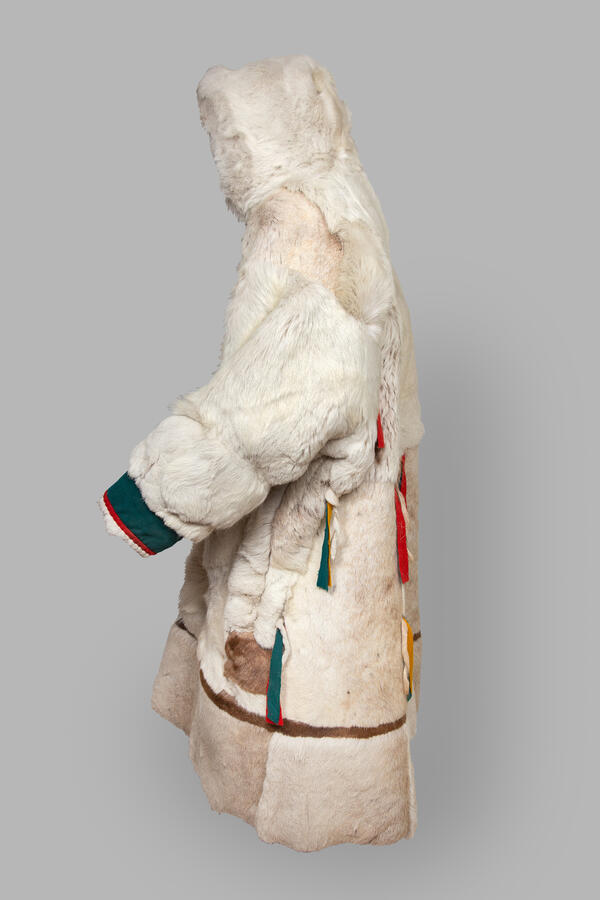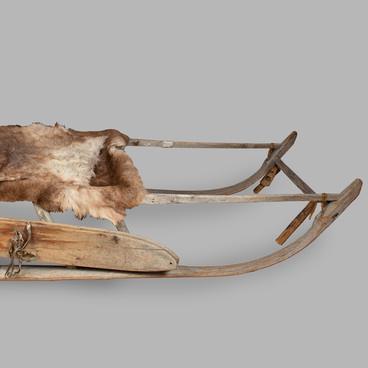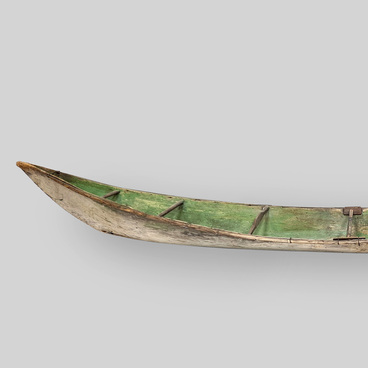In the Yamalo-Nenets Autonomous Okrug, winter lasts up to eight months, and frosts reach 50 degrees Celsius. Making warm outerwear is part of the traditional Nenets culture, a prerequisite for surviving in the Arctic climate. Women pass down sewing techniques and skills from generation to generation. Many Nenets leave their dwelling (chum) and work in the open air. They also herd deer and travel hundreds of kilometers in severe frosts. Their main protection against the cold is their clothing sewn from deer hides.
A gus’, or a sovik, is a Nenets fur coat. It is worn over a malitsa, the basic clothing of the northern peoples. The malitsa is worn all year round: the summer version is made of fabric and the winter kind — of deer hides. Like a malitsa, a gus’ has a hole for the head. It is sewn with fur outward from winter or autumn skins of adult deer. While making a fur gus’, the Nenets go off on a long interior monologue, which expresses their attitude towards the future owner of the new item.
A gus’, or a sovik, is a Nenets fur coat. It is worn over a malitsa, the basic clothing of the northern peoples. The malitsa is worn all year round: the summer version is made of fabric and the winter kind — of deer hides. Like a malitsa, a gus’ has a hole for the head. It is sewn with fur outward from winter or autumn skins of adult deer. While making a fur gus’, the Nenets go off on a long interior monologue, which expresses their attitude towards the future owner of the new item.





